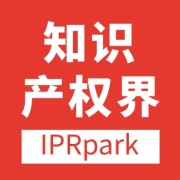没收到验证邮件?请确认邮箱是否正确或 重新发送邮件

#本文由作者授权发布,未经作者许可,禁止转载,不代表IPRdaily立场#
发布:IPRdaily中文网(IPRdaily.cn)
作者:Jafon Fearson律师 及James Naughton律师
供稿:Brinks Gilson & Lione律师事务所
原标题:专利审查与上诉委员会对裁决的充分解释仍是判断撤销的关键
在Vivint, Inc. v. Alarm.com, Inc.案件中,联邦巡回法院撤销了专利审查与上诉委员会(PTAB)对一项权利要求作出的解释(a claim construction),该解释提出了与涉案专利教导(teachings)相反的解释,法院还就“当委员会依赖专家证词对权利要求作出解释时,在何种情况下有权使(上诉法院)对委员会的裁决解释进行遵从(deference)”这一问题向从业人员提供了指导。法院对本案的意见与近期一系列强调PTAB有义务对其裁决提供充分解释的案件裁决相符合。
拓展
专利教导(Patent teachings)
美国最高法院确立判断一项发明是否具有非显而易见性的标准,既(1)现有技术的范围与内容;(2)现有技术与请求保护权利要求的区别;(3) 相关领域的普通技术水平;(4)辅助判断因素(secondary considerations)。在随后的司法实践中,美国联邦巡回上诉法院对这四项判断标准作了进一步的阐述,并确立了“教导-启示-动机” (teaching-suggestion-motivation)标准,即如果现有技术文献的内容给出了明确的教导和启示,使该领域的普通技术人员有动机将它们结合起来得到新技术,则权利要求中所请求保护的产品或方法应当认定为具有显而易见性(obviousness)。
遵从(Deference)
根据美国的民事诉讼联邦规则52(a)(6),对于事实问题(matter of fact)的争议,上诉法院采用“明显错误”(clearly erroneous ) 标准进行审查。也就是说对于下级法院的事实认定给予一定遵从(deference),除非当下级法院事实认定出现“明显错误”时,上诉才予以推翻重审。
外部证据(extrinsic evidence)
委员会有时需要借助外部证据支持以对权利要求范围进行判断,这些外部证据属于事实问题,通常包括:字典解释、专家证词、诉讼材料、技术标准等。
本案Vivint的专利涉及对家用设备远程监控的系统和方法,例如HVAC系统。“通讯设备识别码(communication device identification codes)”被分配到用户的远程设备,当设备发生故障时,系统通过“信息资料”通知特定的用户。委员会对“通讯设备识别码”的解释为:能够独特识别通讯设备的某物。委员会认为其中包括设备ID或设备序列号(Vivint专利图形中的一个变量),但不包括电话号码和邮箱地址。
联邦巡回法院撤销了PTAB的权利要求解释,指出Vivint的专利没有定义“通讯设备识别码”,而排除电话号码和邮箱地址作为识别码,“违反了专利教导(patents’ teachings)”,其中明确教导电话号码可独特地识别通讯设备。”法院解释道:
即便假设委员会对权利要求的解释是正确的,然而,委员会的结论认为电话号码或邮箱地址不能独特地识别通讯设备违反了专利教导。例如,涉案专利解释了移动识别号码与设备相连就如同电话号码与移动电话相连的方式一样,如通讯设备 … … 但委员会的解释却恰恰相反… … 涉案专利在特定图形中包含“设备ID”和“序列号”的变量,例如,专利提出这些变量还可用于识别通讯设备。专利没有提出电话号码和邮箱地址不可进行此类操作。
法院同时驳回了Vivint以下主张:由于委员会依赖Vivint的专家证词作为外部证据(extrinsic evidence),委员会的裁决解释有权得到法院遵从。法院认为委员会对权利要求的解释“没有参考任何外部证据,”认为即便“委员会对Vivint的专家予以信任”,但参考“仅应用于对现有技术的解释(既专利的有效性而非权利要求解释)。”作为进一步的支持,法院指出在委员会的声明中,其对权利要求的解释“是基于对涉案专利权利要求和说明书的复审。”
启示
本案向从业人员澄清了:专家证词应用于已被解释的权利要求(a construed term),在上诉中可能不构成有权使法院予以遵从的事实认定,这与引用专家证词作为支持正确的权利要求解释本身恰恰相反。这样的区别可能会特别影响到法院为认定事实所采用的“实质性证据”审查标准(“substantial evidence”standard of review)”,既“一个具有正常理性的人,可以接受这样的相关证据足以支持所得结论。”
Vivint案的裁决与近期一系联邦巡回法院裁决相符合,这些案件强调PTAB有义务“对其裁决提供充分细致的解释,以确保有意义的司法审查及防止对机构行为的司法干预”。Rovalma, S.A. v. Böhler-Edelstahl GmbH & Co. KG. 例如Icon Health & Fitness, Inc. v. Strava, Inc.案,法院认为委员会采纳请愿人的意见书,不构成将请愿人代理律师的辩论转化为事实认定,或满足对相关认定所要求的解释;在re Van Os案,委员会认为缺乏提供所要求的理由而对现有技术进行组合是很直观的,因为“缺乏一些基本原理的阐述,既认为现有技术的组合为‘常识’或‘直观的’,与简单说明组合是显而易见的并无区别”;在Emerson Elec. Co. v. SIPCO, LLC案,“由于委员会对其分析中至关重要一点的推理没有充分解释,并且该结论违反了委员会对几乎相同事实另一案件的裁决,我们撤销委员会对所上诉权利要求的裁决并对诉讼还押候审。”从业人员在准备上诉策略时应记住法院着重PTAB对其裁决充分解释的义务。
附:英文全文
Adequacy of Explanation Remains Key Area of PTAB Reversal
In Vivint, Inc. v. Alarm.com, Inc., the Federal Circuit reversed a claim construction by the PTAB which “suggest[ed] the opposite” of the teachings of the patents at issue, and gave guidance to practitioners on when the Board’s reliance on expert testimony entitles the Board’s construction to deference. The Court’s non-precedential opinion is consistent with a string of recent decisions stressing the PTAB’s obligation to adequately explain its decisions.
Vivint’s patents are directed to systems and methods for remotely monitoring home equipment, such as an HVAC system. “Communication device identification codes” are assigned to the user’s remote devices, and the system notifies a particular user in case of the equipment’s malfunction through “message profiles” (e.g., settings to notify different users if a malfunction occurs during the day versus at night). The Board construed “communication device identification codes” as “something ‘capable of uniquely identifying communication devices,’” which the Board found included either a device ID or a serial number of a device (variables from one of Vivint’s patent’s figures), but excluded phone numbers and email addresses.
The Federal Circuit reversed the Board’s construction, pointing out that Vivint’s patents did not define “communication device identification codes,” and that the exclusion of phone numbers or email addresses as identification codes “defie[d] the patents’ teachings” which “expressly [taught] that a phone number can uniquely identify a . . . communication device.” The Court explained:
Even assuming [the Board’s construction] is correct, however, the Board’s conclusion that a phone number or email address cannot uniquely identify a communication device defies the patents’ teachings. For example, both patents explain that a mobile identification number refers to a device in the same way that a phone number refers to a cellular phone, i.e. a communication device. . . . But the Board’s construction suggests the opposite. . . . That the ’123 patent includes “Device ID” and “Serial Number” variables in a particular figure, for example, suggests these variables might also be used to identify communication devices. It does not suggest that phone numbers and email addresses cannot also do so.
The Court also rejected Vivint’s assertion that the Board’s construction was “entitled to deference because it relied on extrinsic evidence,” Vivint’s expert testimony. The Court found that the Board’s construction was “without reference to any extrinsic evidence,” finding that although “[t]he Board did credit Vivint’s expert,” it did so “only in applying its construction . . . to the prior art.” As further support, the Court pointed to the Board’s statement that its construction was “[b]ased on [its] review of the claims and Specification of the ’601 patent.”
Takeaways:
Vivint clarifies for practitioners that expert testimony applying a construed term may not constitute a factual finding entitled to deference on appeal, as opposed to expert testimony that is cited in support of the proper construction itself. This distinction may be especially impactful in view of the Court’s “substantial evidence” standard of review for findings of fact, which is “such relevant evidence as a reasonable mind might accept as adequate to support a conclusion.”
Vivint is also in line with a string of recent Federal Circuit decisions stressing the PTAB’s obligation to “set forth a sufficiently detailed explanation of its determinations both to enable meaningful judicial review and to prevent judicial intrusion on agency authority.” Rovalma, S.A. v. Böhler-Edelstahl GmbH & Co. KG, 856 F.3d 1019, 1024 (Fed. Cir. 2017). See, e.g., Icon Health & Fitness, Inc. v. Strava, Inc., 849 F.3d 1034, 1042-48 (Fed. Cir. 2017) (finding Board’s adoption of petitioner’s brief did not “transform [the petitioner’s] attorney argument into factual findings or supply the requisite explanation that must accompany such findings”); In re Van Os, 844 F.3d 1359, 1361 (Fed. Cir. 2017) (Board’s finding that it would have been intuitive to combine prior art lacked the requisite reasoning because “[a]bsent some articulated rationale, a finding that a combination of prior art would have been ‘common sense’ or ‘intuitive’ is no different than merely stating the combination ‘would have been obvious.’”); Emerson Elec. Co. v. SIPCO, LLC, No. 2017-1866, 2018 U.S. App. LEXIS 24499, at *1 (Fed. Cir. Aug. 29, 2018) (non-precedential) (“Because the Board did not adequately explain its reasoning on a point that was central to its analysis and its conclusion on that point was contrary to another Board opinion on nearly identical facts, we vacate the Board’s determination as to the appealed claims and remand for further proceedings.”). Practitioners preparing an appeal strategy would do well to keep in mind the Court’s focus on the PTAB’s obligation to fully explain its determinations.
Citation: Vivint, Inc. v. Alarm.com, Inc., ___ F.3d ___, 2018 U.S. App. Lexis 35817 (Fed. Cir. Dec. 20, 2018).
发布:IPRdaily中文网(IPRdaily.cn)
作者:Jafon Fearson律师 及James Naughton律师
供稿:Brinks Gilson & Lione律师事务所
编辑:IPRdaily赵珍 校对:IPRdaily纵横君
“投稿”请投邮箱“iprdaily@163.com”

「关于IPRdaily」
IPRdaily成立于2014年,是全球影响力的知识产权媒体+产业服务平台,致力于连接全球知识产权人,用户汇聚了中国、美国、德国、俄罗斯、以色列、澳大利亚、新加坡、日本、韩国等15个国家和地区的高科技公司、成长型科技企业IP高管、研发人员、法务、政府机构、律所、事务所、科研院校等全球近50多万产业用户(国内25万+海外30万);同时拥有近百万条高质量的技术资源+专利资源,通过媒体构建全球知识产权资产信息第一入口。2016年获启赋资本领投和天使汇跟投的Pre-A轮融资。
(英文官网:iprdaily.com 中文官网:iprdaily.cn)
本文来自IPRdaily.cn 中文网并经IPRdaily.cn中文网编辑。转载此文章须经权利人同意,并附上出处与作者信息。文章不代表IPRdaily.cn立场,如若转载,请注明出处:“http://www.iprdaily.cn/”

 共发表文章716篇
共发表文章716篇文章不错,犒劳下辛苦的作者吧
- 我也说两句
- 还可以输入140个字












